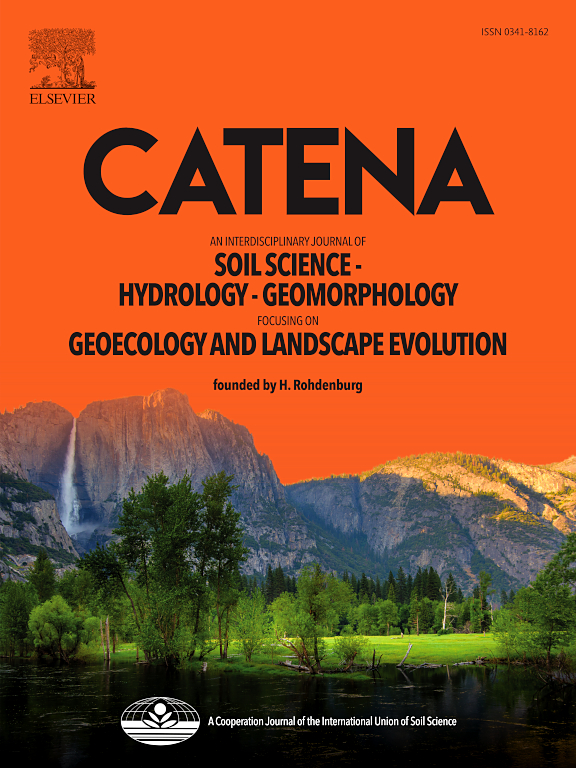Environmental drivers of soil organic carbon in the Australian rangelands
IF 5.4
1区 农林科学
Q1 GEOSCIENCES, MULTIDISCIPLINARY
引用次数: 0
Abstract
Soil organic carbon (SOC) is vital for maintaining healthy ecosystems and providing benefits beyond climate change mitigation. The Australian rangelands occupy a large area and have arid, semi-arid, and tropical climates in the north. They constitute Australia’s most significant carbon sink. Identifying the key drivers of SOC content variation across the different conditions in these regions remains an important knowledge gap. We use a quantitative hierarchical framework and data-driven methods to systematically analyse the controls of SOC variation over the large rangelands scale, regionally and locally, in two soil layers, 0–10 cm and 10–20 cm. At the rangelands scale, vegetation, climate, and topography are the main controls of SOC. At the regional scale, vegetation cover and type, plant species richness, terrain features, soil texture and mineralogy, and microbial diversity determine the variation in SOC content. At the local scale, where the climate does not limit plant carbon inputs, vegetation type is the most significant driver. In regions where a drier and more variable climate restricts carbon inputs into the soil, vegetation type, biomass, and soil mineralogy determine the differences in SOC content. Despite the relatively lower plant species richness in tropical regions, vegetation contributes positively to SOC in both soil layers. In contrast, in areas where aridity increases along climatic gradients, vegetation negatively affects SOC in the 20–30 cm soil layer. Our results provide insights into the drivers of SOC content in Australian rangelands.
求助全文
约1分钟内获得全文
求助全文
来源期刊

Catena
环境科学-地球科学综合
CiteScore
10.50
自引率
9.70%
发文量
816
审稿时长
54 days
期刊介绍:
Catena publishes papers describing original field and laboratory investigations and reviews on geoecology and landscape evolution with emphasis on interdisciplinary aspects of soil science, hydrology and geomorphology. It aims to disseminate new knowledge and foster better understanding of the physical environment, of evolutionary sequences that have resulted in past and current landscapes, and of the natural processes that are likely to determine the fate of our terrestrial environment.
Papers within any one of the above topics are welcome provided they are of sufficiently wide interest and relevance.
 求助内容:
求助内容: 应助结果提醒方式:
应助结果提醒方式:


